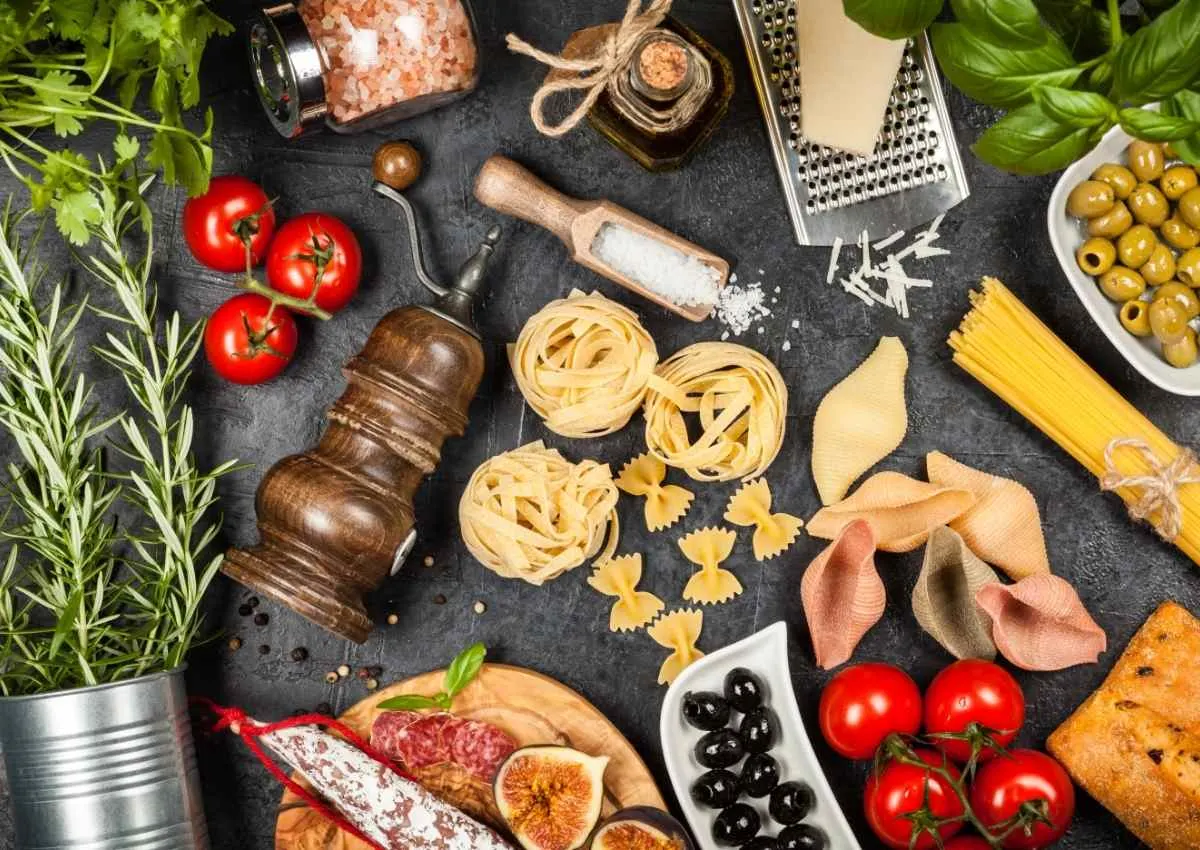Traditional Italian food is arguably the most popular and well known cuisine in Europe and indeed the entire world. Typical Italian ingredients, methods and dishes influence other palettes across the globe, and even spawn sub-cultures such as American-Italian food.
Generally Italian dishes are characterised by their simplicity, focusing heavily on fresh, quality, seasonal ingredients. Of course, Italian cuisine is mostly known worldwide for being the home of pizza, pasta and ragu.
Authenticity lies at the heart of traditional Italian cooking with a significance placed on preserving original recipes that have been passed down generations.
Furthermore, Italian dishes are often defined by regionality with certain foods being traceable back to a very specific region of Italy and sometimes even being named after that part, bolognese from Bologna for example.
The diversity by region, especially between the north and the south, is what makes Italian food so incredibly rich and varied, with so much to uncover. Italian delicacies and specialities are also defined by family traditions and regional styles, so each Italian food experience you have can differ from one place to the next.
Table of Contents
Most Popular Italian Dishes
Pasta, tomatoes, vegetables, cheese, fish, meat and olive oil are all central elements of Italian cuisine and the Mediterranean diet. Italians utilise a wide range of cheeses including Parmesan, mozzarella, ricotta and Pecorino Romano. High quality olive oil and good pasta are also very important ingredients.
Traditionally the structure of an Italian meal can serve up to 10 courses, including aperitivo, antipasto, primo and dolce.
So without further ado, here are the absolute must-try traditional dishes of Italy along with recipes to try for yourself.
Lasagne
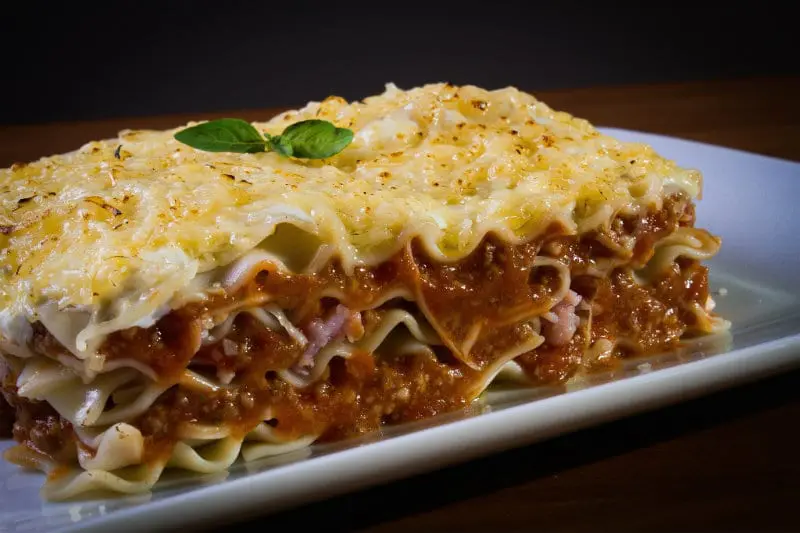
Lasagne is one of the most popular traditional Italian dishes that has been adapted and evolved around the world.
Its origins can be traced back to Naples or Emilia-Romagna (depending on who you talk to), where you can still find the authentic version.
Lasagne consists of beef ragu and vegetables layered between pasta sheets and bechamel sauce, topped with cheeses (most often parmesan or mozzarella), and oven baked.
Lasagna was never typically made with tomatoes as it was invented well before tomatoes were imported from the New World in the 16th century.
Ragu instead encompassed the rich meat stock flavours complimented by red wine, and is the delicious core of the traditional Italian lasagne.
Risotto
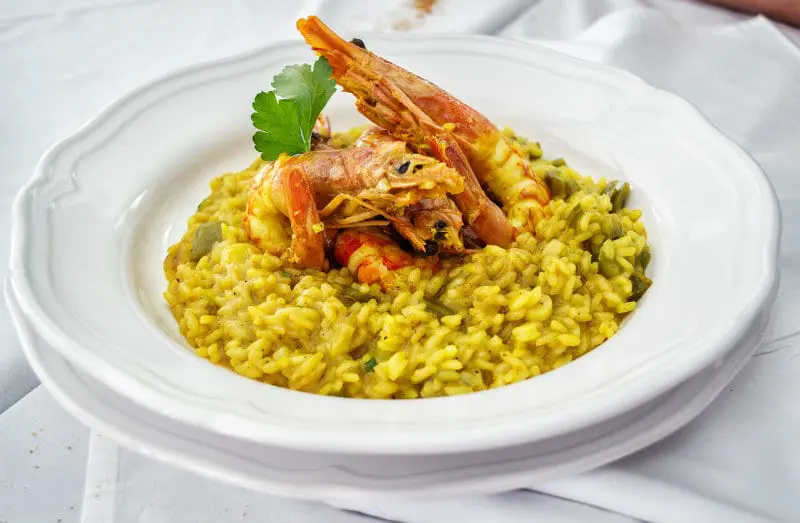
Whilst Italy isn’t particularly well known for its rice dishes, risotto is a unique and unreserved part of traditional Italian cuisine.
Originating in Northern Italy, risotto is a creamy rice dish cooked in a broth with saffron, butter, wine and onion.
Meat, fish and vegetables are sometimes added depending on region, including shrimp, cuttlefish, peas, mushroom, chicken, bacon or chorizo.
First the butter and oil is heated in a pan before adding onions, white wine and broth. Rice is then added and very cooked slowly over a low heat, before adding in the final seasonings and toppings.
The result is a creamy, rich texture that packs a real punch of flavour.
Spaghetti carbonara
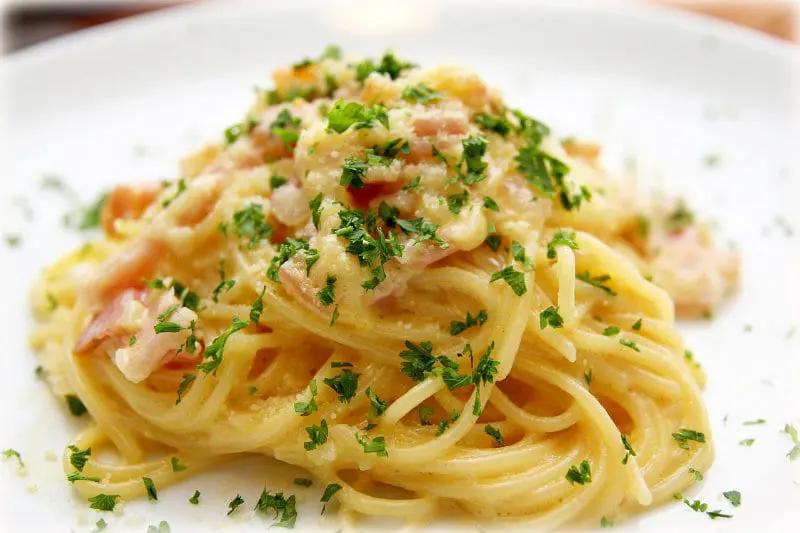
Carbonara is another classic spaghetti dish very typically associated with Italian cooking and eaten around the world. Italian cuisine is an absolute haven of pasta dishes so it’s difficult to pick just one, but the carbonara just encompasses the simplicity of authentic Italian cooking so superbly.
Reportedly originating in Rome, carbonara is made with spaghetti, egg, guanciale (pork cheek, often replaced by pancetta, lardons or bacon in adapted versions), cheese and black pepper.
The difference between a good carbonara and a bad carbonara is a simple misuse of ingredients or replacing essential aspects, for example using cream instead of creating the sauce from scratch. However, the pasta and the cheeses are interchangeable, with linguine or fettuccine sometimes substituting the spaghetti and parmesan sometimes replacing the pecorino romano.
Carbonara is made by combining raw eggs with cheese (pecorino romano or parmesan), then adding to hot pasta with fried guanciale pork cheek and black pepper.
Aranchini
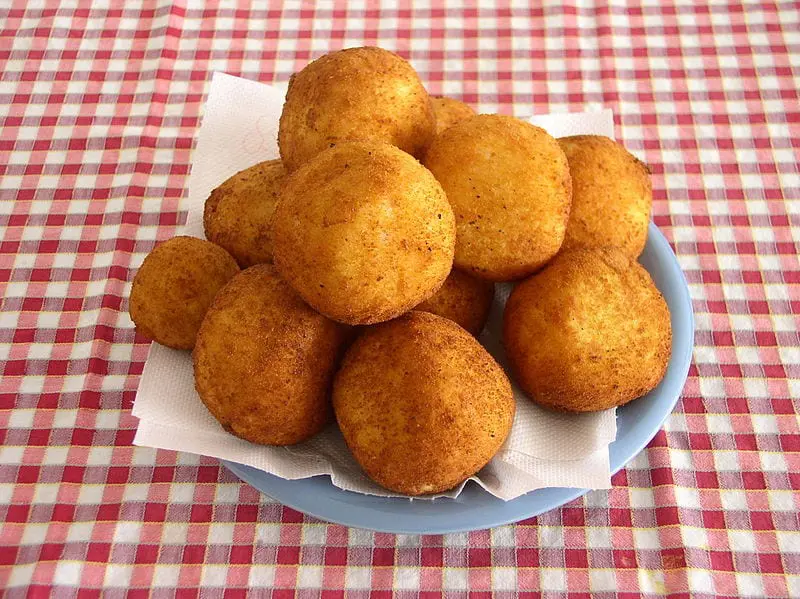
Arancini was first developed as a way to make use of leftover risotto by creating a uniquely Italian snack.
Arancini are stuffed rice balls coated in flour and breadcrumbs and fried to a golden brown colour, but there are numerous variations of arancini depending on region including:
- Arancini con ragù – utilising the famous Italian tomato, meat sauce ragu with mozzarella and peas
- Arancini con burro – made with butter or bechamel sauce
- Arancini con funghi – a mushroom alternative
- Arancini con pistacchi – using pistachios
- Arancini con melanzane – an aubergine twist
Arancini con ragù is the most common type of arancini however, and can be found all around Italy.
Ragù alla Bolognese
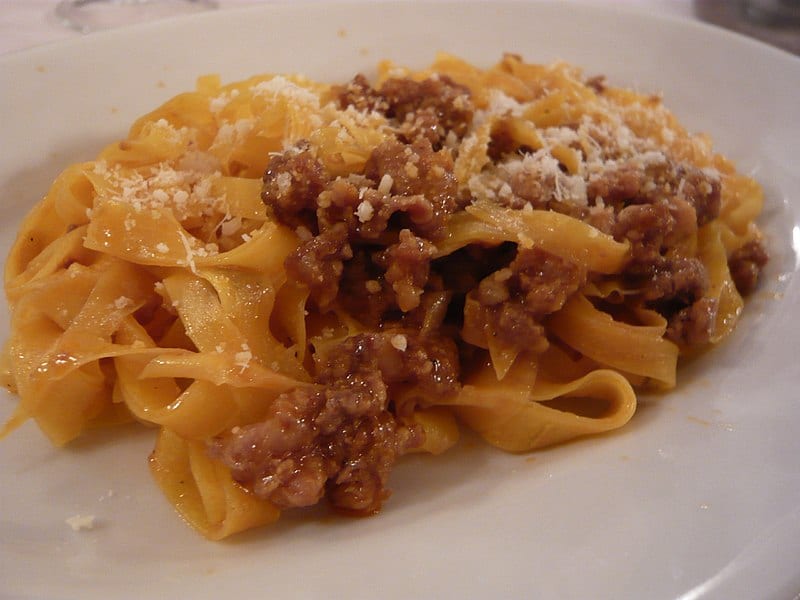
If you ever go to Italy, don’t ask for spaghetti bolognese. Whilst spaghetti bolognese is considered Italian to those outside of Italy, it’s not actually an authentic Italian dish.
However, there are similarities with Ragù alla bolognese which uses fresh tagliatelle instead of dried spaghetti and is less heavy on the tomato sauce. Furthermore, the dish doesn’t use oregano, basil or garlic like a spaghetti bolognese does, and certainly doesn’t go anywhere near cheddar cheese!
Ragu is a meat-based sauce used in many Italian pasta dishes and is made with ground meat, finely chopped sauteed celery and carrot, tomatoes, red wine, stock and milk, cooked on a very low heat for 3 or more hours.
The ingredients vary by region in Italy and can include different meats and liquids, and can often exclude tomatoes.
Pizza
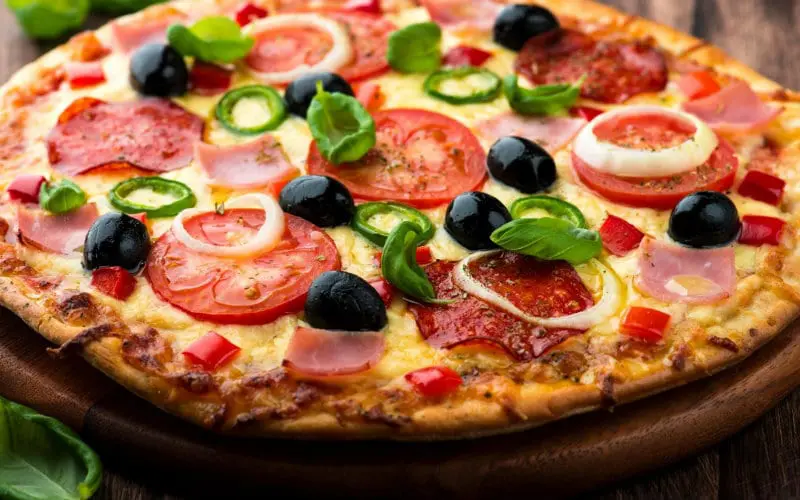
Pizza is the most exported dish of all traditional Italian dishes, being eaten in nearly every country in the world. Having first been invented in Naples, authentic Neapolitan pizza has now been officially registered as a ‘Traditional Speciality Guaranteed dish’ by the European Union as a means to protect and promote the original recipe.
Neapolitan pizza is the most simple and authentic of them all, consisting solely of a dough base with tomatoes, mozzarella cheese, fresh basil and olive oil.
However, there are other variations of pizza that are still authentic in Italy including pizza margherita and pizza marinara.
Traditionally, Italian style pizza is quite small and is usually just a serving for one, taking only approximately 2 minutes to cook in a pizza oven. Moreover, too many toppings are considered inauthentic or less quality because fewer ingredients show a confidence in the quality of the products used to make the dish.
Of course it goes without saying that other evolutions of pizza developed outside of Italy, such as American-Italian style, are considered inauthentic and are not typically consumed by Italians.
Agnolotti
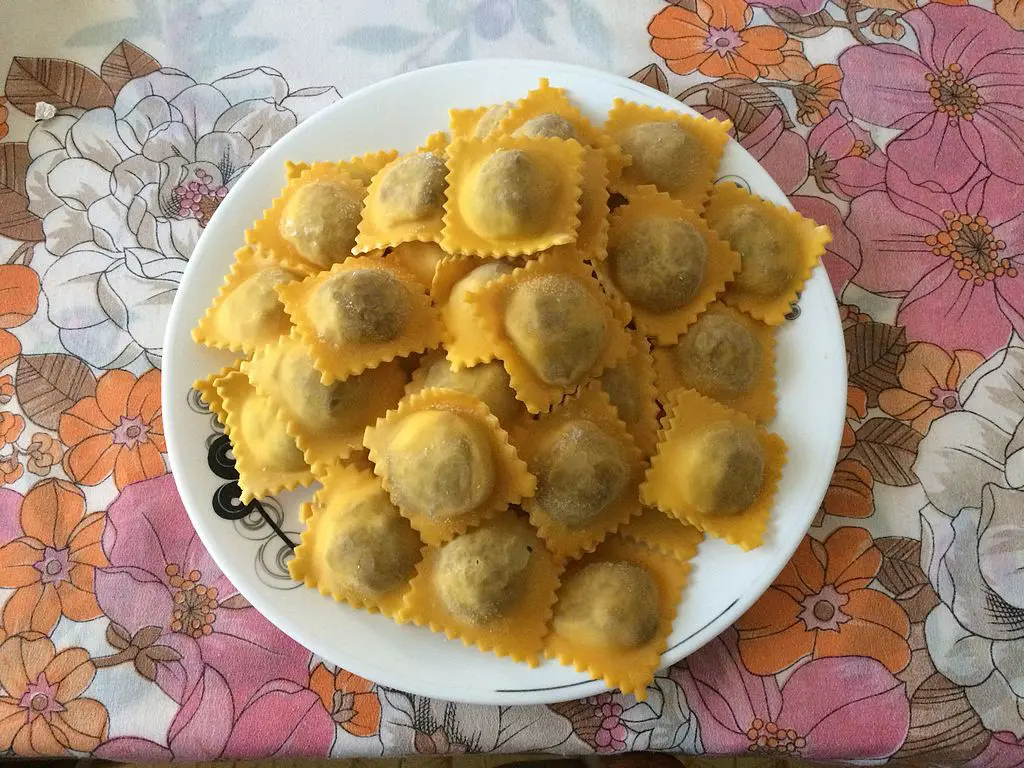
Agnolotti is stuffed pasta which is made by stuffing pasta dough with roasted meat or vegetables with a really simple sauce so as not to distract too much from the flavor.
Agnolotti is similar to ravioli with the main difference being that Agnolotti is made with folded over pasta, rather than 2 square pieces like ravioli.
Sfogliatella
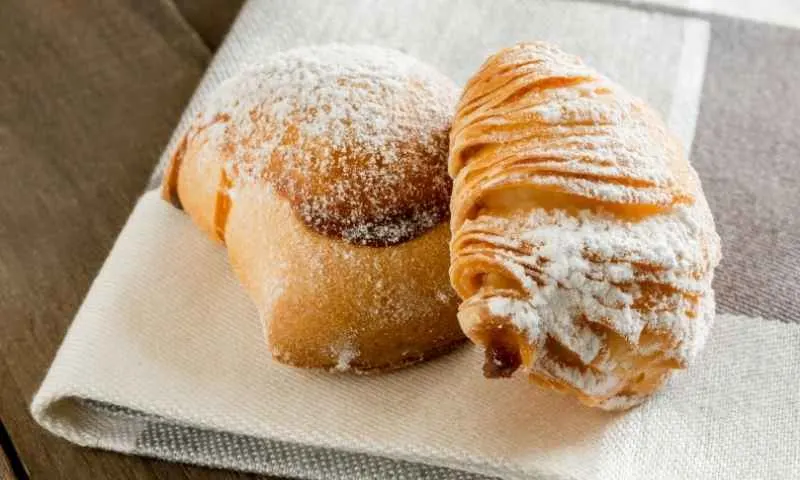
Sfogliatella is a pastry similar to a croissant except that it is shaped like a lobster tail. It is also typically filled with sweet ingredients such as orange flavored ricotta, candied citron peel or almond paste.
Despite Italy’s incredible reputation for savory dishes, Italians also have a penchant for sweet treats, of which Sfogliatella is a very popular choice.
Prosciutto
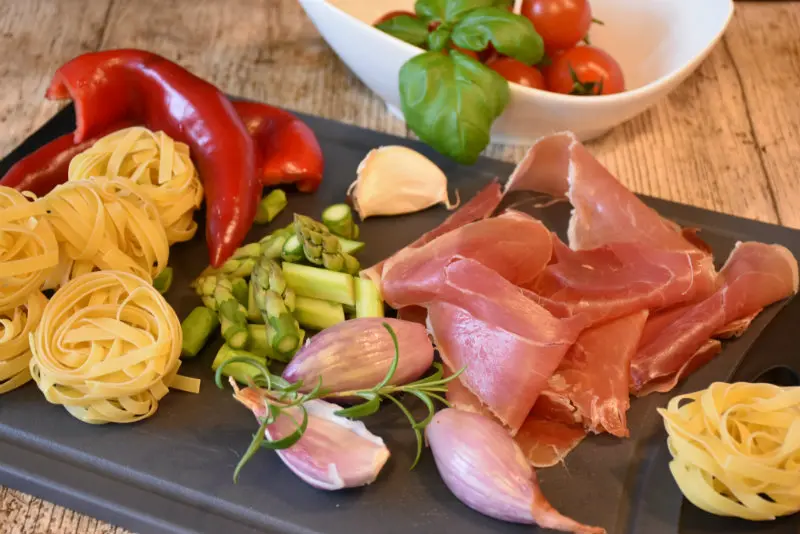
Prosciutto is often served as an antipasto in Italian meals and is simply dry-cured, uncooked ham cut thinly into slices.
Even though prosciutto is served uncooked, it is safe to eat thanks to the curing process.
It is made from the thigh or hind leg of a pig and is often served wrapped around a breadstick (grissini) or with melon. However, there are many other uses for prosciutto, often being included in pasta dishes or in stuffings of other meats.
Whilst you can buy different variants of prosciutto according to the different Italian regions, the most famous is prosciutto di Parma or Parma ham, which is developed over a period of up to 24 months by a salting and air-drying process.
Ribollita
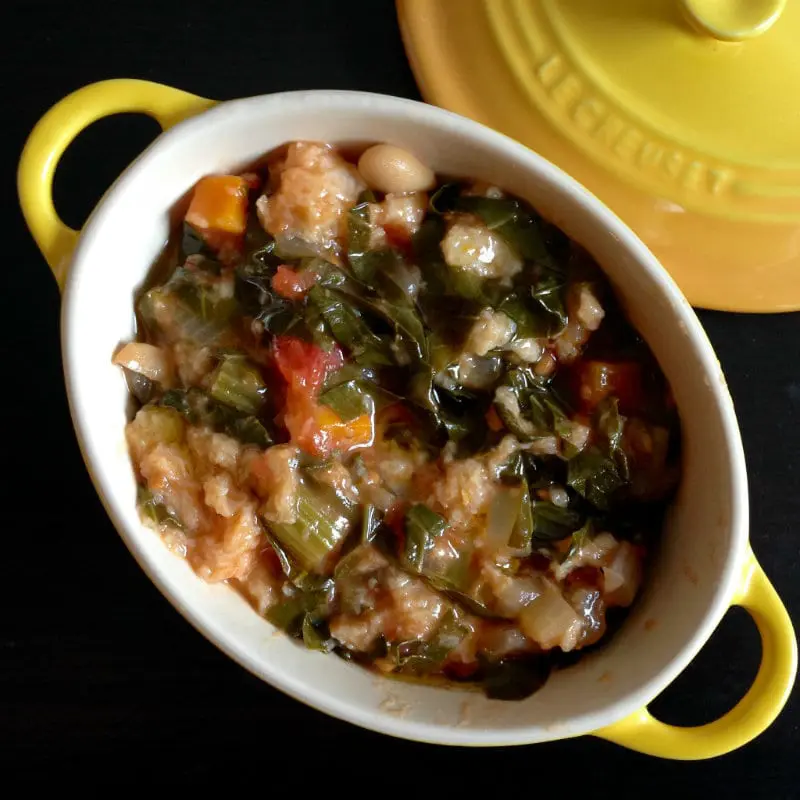
Considered one of Tuscany’s most famous dishes, Ribollita has its roots in peasantry, having been eaten by servants made from leftovers.
Ribollita is a soup made of bread and vegetables such as cannellini beans, cabbage, carrots, potatoes, onion and celery. Servants would collect the unfinished leftovers from their masters and boil the different ingredients to make a hearty, filling meal.
The ingredients are simply added to a large pot of boiling water and stewed for an hour, allowing the bread to fall apart in to a thick consistency.
It is most commonly found in Tuscany and is a must try for tourists travelling to the region.
Tortellini
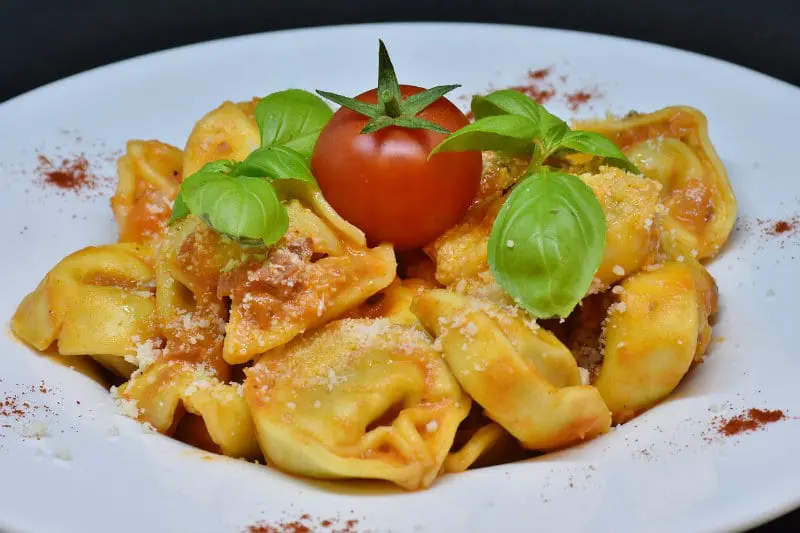
Tortellini are small parcels of stuffed pasta, nicknamed ‘belly button’ for their shape.
In Northern Italy, tortellini is often eaten on Christmas day as one of the many courses on the traditional Italian meal.
They are most commonly stuffed with a mixture of meat (prosciutto or pork loin) and/or cheese, and served in a broth.
There are many different types of stuffing ingredients depending on the variation of tortellini, but the emphasis with tortellini is on fresh, quality ingredients, as is typical with Italian cooking. Of course, Parmesan and Italian seasonings will add depth of flavor.
Cotoletta Alla Milanese
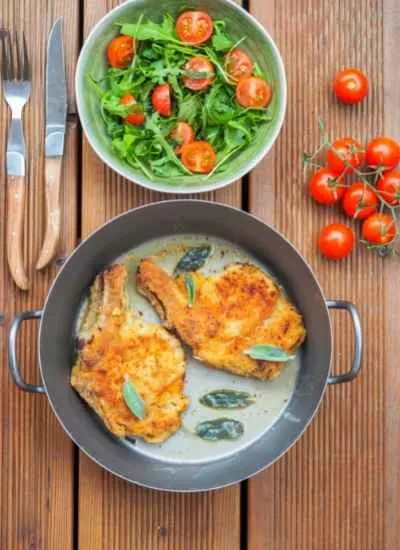
Cotoletta Alla Milanese is similar to the traditional German weiner schnitzel except that it uses veal instead of beef and pork. The Italian version also keeps the bone in to impart additional flavor.
Cotoletta Alla Milanese is quite a simple dish, simply breading the meat and frying in butter. But as with all Italian cooking, simplicity is the key to its success.
The dish is a mainstay of the Lombard cuisine and is symbolic of the city of Milan.
Bombardino Cocktail

Ok so while technically not a food, the Bombardino cocktail is so closely associated with Italy that it would be a travesty not to include it in the list.
Most commonly known for being the alcoholic drink of choice for those skiing in Italy’s mountainous regions, a Bombardino is a cocktail which is typically prepared with egg liqueur, cream and whiskey.
Conchiglie Pasta
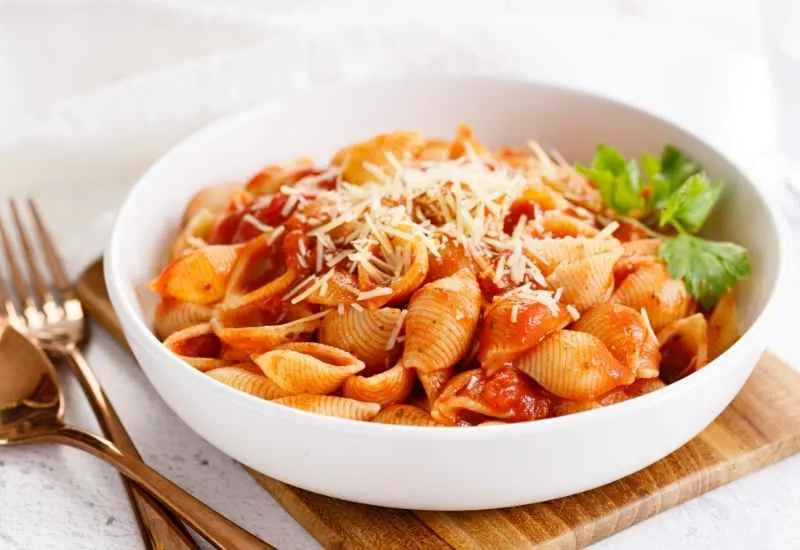
Ok so Conchiglie Pasta on its own isn’t a dish but since it is one of the most popular pasta shapes throughout Italy and the entire world, it’s deserving of its place on the list.
Conchiglie Pasta is seashell-shaped which means that it holds thick sauces well, both in the surface area to cling to and as a handy little pocket. In fact, many Conchiglie recipes will stuff a filling into the individual shells creating a stuffed pasta.
Sea Urchin Pasta
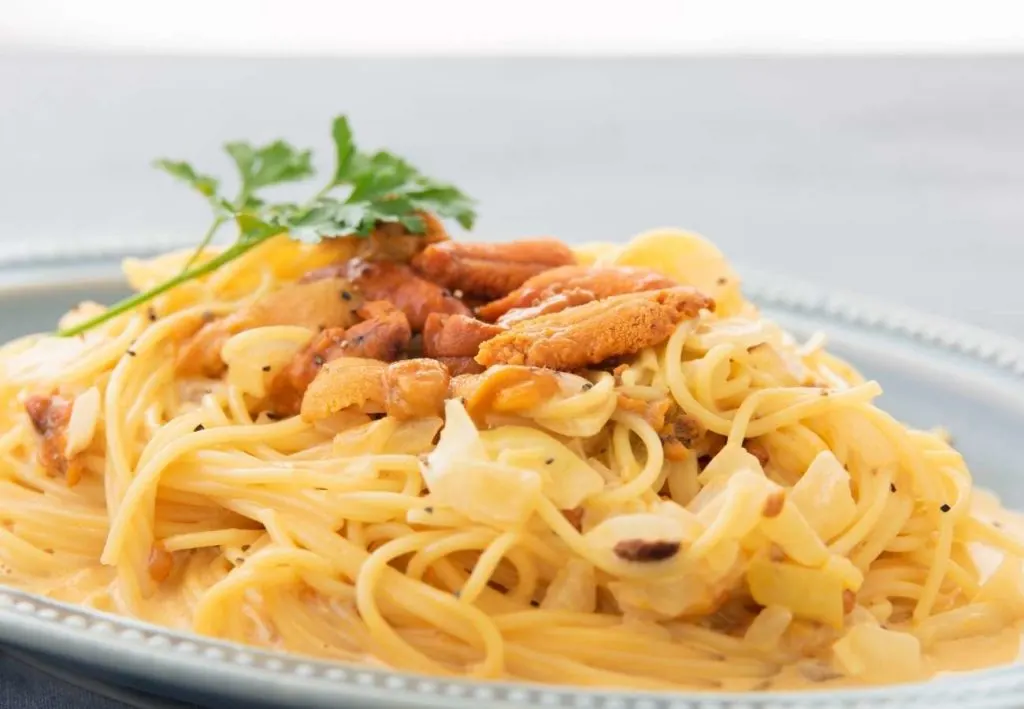
Sea urchins are spherical, hard-shelled animals generally found on the seabed of every ocean. They usually live in cracks and crevices on coastal rocks and reefs. Sea urchins have a delicate flavor, hence it is best served with dishes containing a neutral taste, like pasta or toast. People generally tend to describe it as a sweet yet subtle food, and it is frequently likened to oysters in terms of flavor.
Pearà
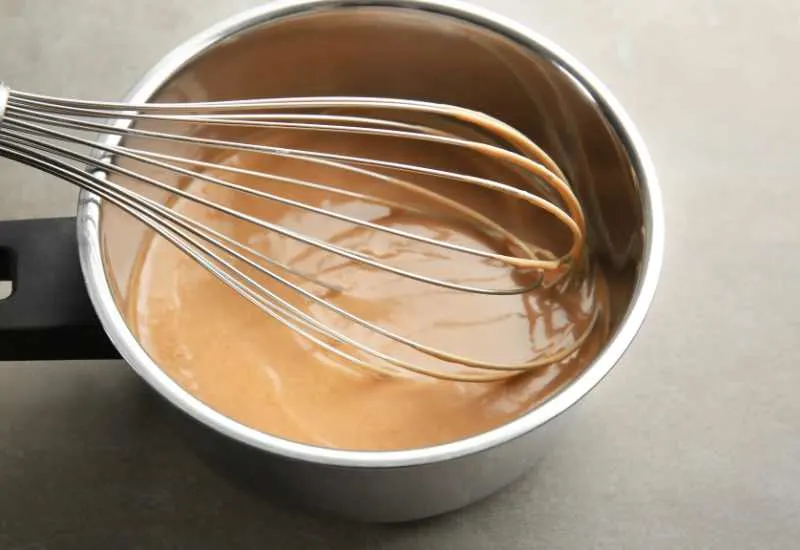
Pearà is a traditional sauce from Verona, Italy, made from stale bread, marrow, broth and black pepper. Pearà is an accompaniment for many dishes but the most popular way to eat it is with Lesso which is a dish made from a variety of meats which can include sausages, veal, beef ribs, cows tongue, boiled in broth.
Salsiccia Sausage
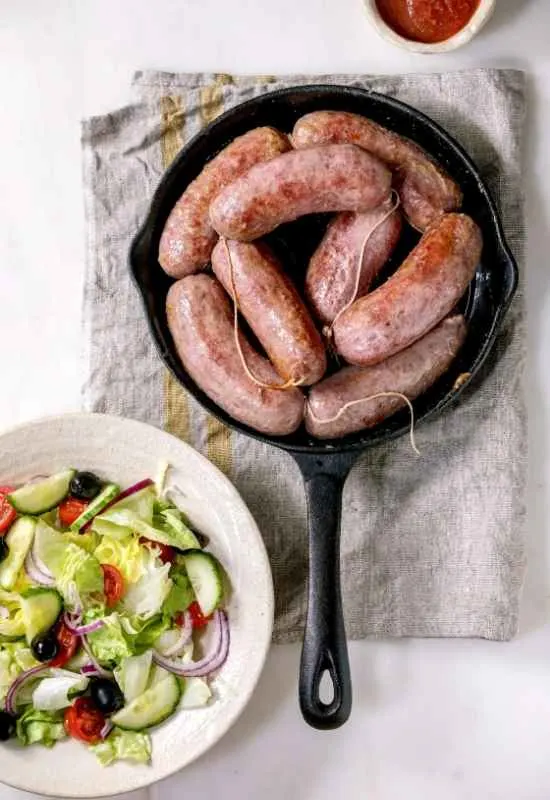
Salsiccia is a type of sausage prepared using minced or ground pork meat, pork fat and several spices. Salsiccia can be served as a main dish, used as a sandwich filling, a topping on traditional pizzas, or used as an ingredient in pasta sauces or casseroles.
Salsiccia is not just popular within Italy but is also widely loved and consumed in the United States. In the US salsiccia is largely familiar as a pork sausage spiced with fennel or anise.
Spritz Veneziano (Aperol Spritz)

A Spritz Veneziano, also known as an Aperol spritz, is a wine-based cocktail generally consumed in Northeast Italy. It is prepared using prosecco, digestive bitters, and sparkling mineral water (typically club soda). It is commonly served as an aperitif, a drink that helps with the stimulation of one’s appetite prior to a meal.
It is a light and refreshing drink and has a sweet, citrusy, bubbly and bitter flavor.
Carpaccio
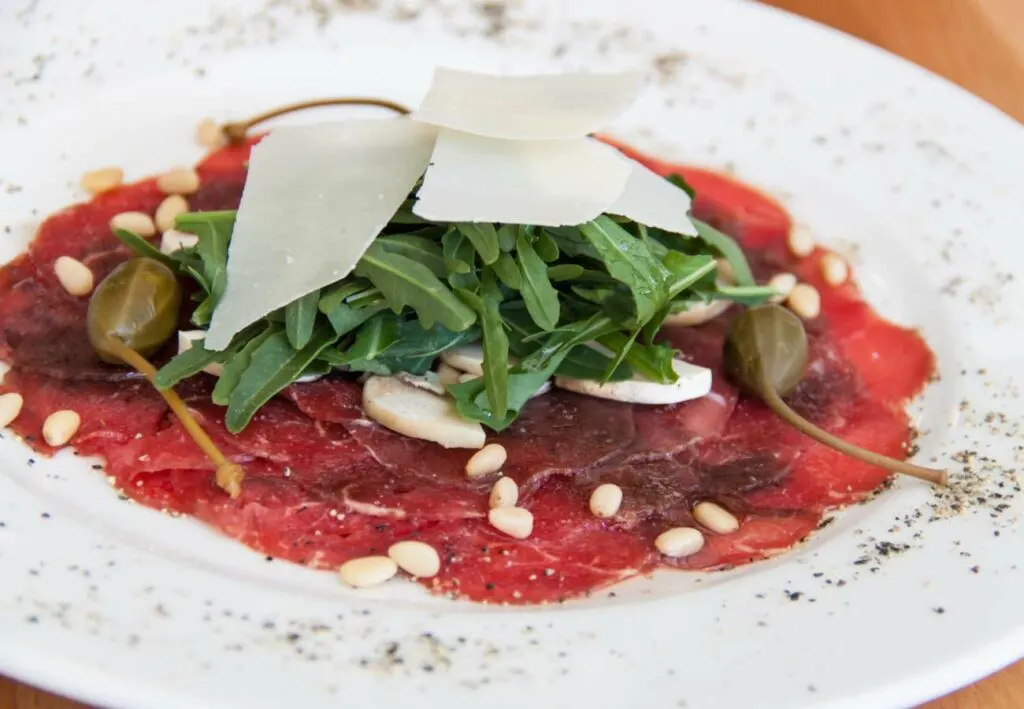
Carpaccio is a dish prepared using meat or fish (such as beef, veal, venison, salmon or tuna), thinly sliced or pounded thin. The dish is topped off with olive oil and lemon juice, and finally capers and onions are placed over it. It is usually consumed raw and served as an appetizer.
Marron Glacé

A marron glacé is a confection that includes a chestnut candied in sugar syrup and glazed. It can be used as an ingredient in several desserts, although they can be served on their own too.
Invented in northern Italy and southern France, marrons glacés are known to have a woody fragrance and a nutty flavor.
Spaghetti alla Puttanesca
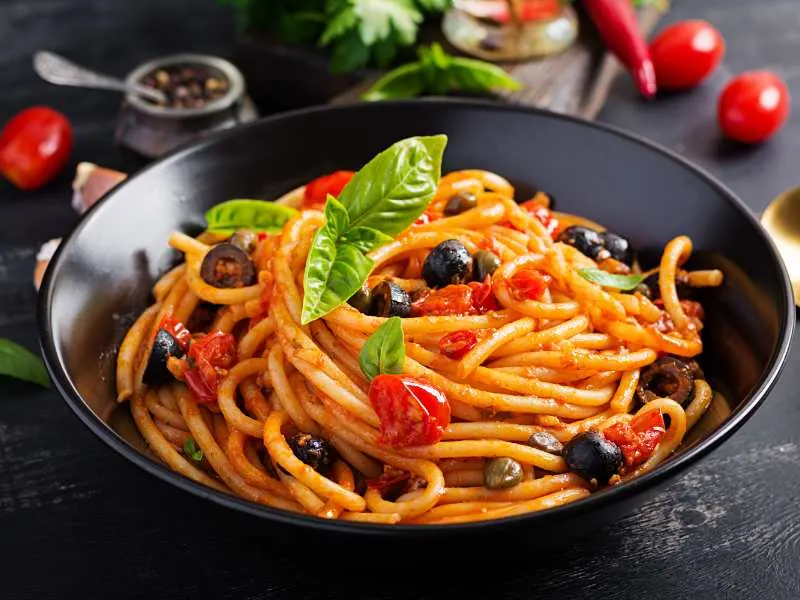
Spaghetti alla Puttanesca is a pasta dish known for its salty sauce containing olives, anchovies, capers, peppers and garlic. The mixture of olive and anchovies bring an umami flavor to the sauce while the garlic and pepper make for an aromatic meal.
Piadina
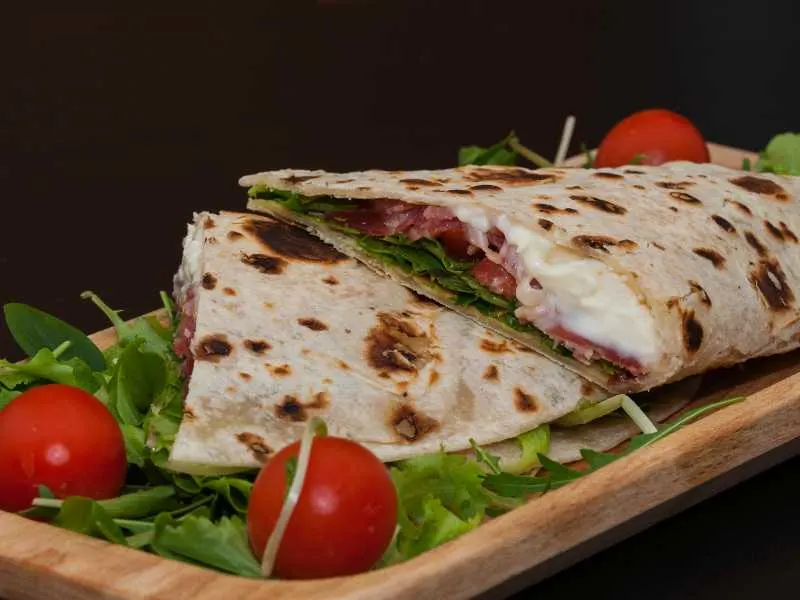
Piadina is a thin Italian flatbread prepared using lard or olive oil, white flour, salt and water traditionally baked in a terracotta dish (although more modern equipment is commonly used these days).
The dish is mostly eaten as a snack, however it is sometimes also eaten for lunch or breakfast. Piadina is also popular in neighboring San Marino.
Panna Cotta
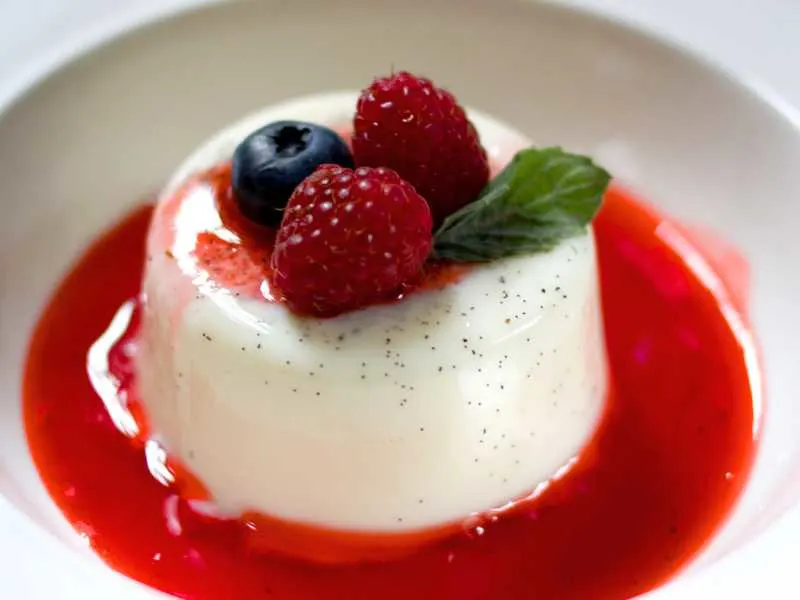
Panna Cotta is an Italian cream-based dessert. It is made with heavy cream, half and half or whole milk, sugar, gelatin and vanilla.
The ingredients are heated up together just until the sugar and gelatin dissolve then they are poured into individual molds and chilled for a few hours until firm. When ready to serve they are popped out of their mold and served bottom up usually topped with sauce or fruit.

